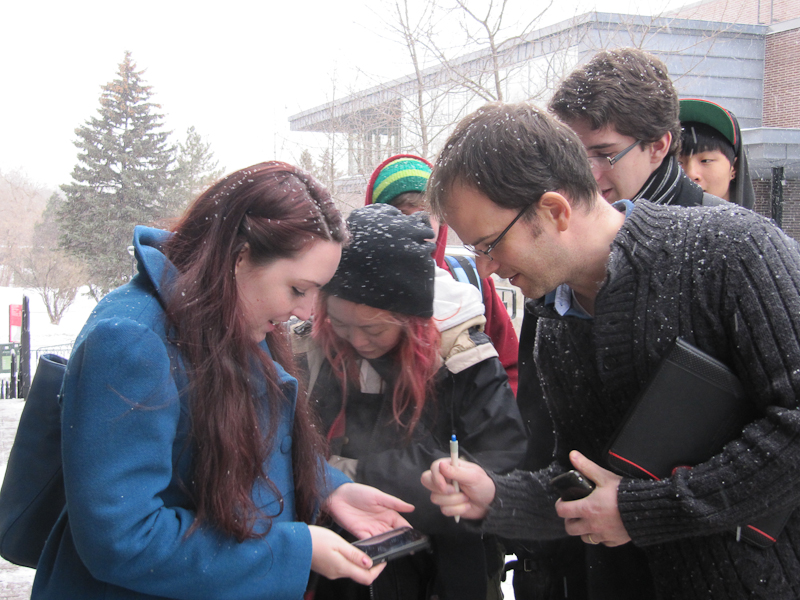
The words “digital” and “antiquity” may sound like contradictory terms, but in Carleton professor Shawn Graham’s classroom, the two are combined to give students a different way of understanding history.
Graham, a professor of digital humanities, combines an academic background in the history of ancient Rome and Greece with his love of video games. The result is a mix of archaeology and game-based learning.
For his students, Graham’s research yields a learning experience that joins the exploration of the past with new tools for learning, including smartphone scavenger hunts and optional video game assignments.
“Every game makes an argument about the way the world works,” Graham says. “With history games, those arguments correspond more or less to the kind of historiography or the kinds of world views that the game makers are using.”
Video games are “powerful simulation engines” that often attract players, like Graham’s students, more than traditional media such as books, he says. As an example, he points to the Civilization series of video games, which allows players to write history, according to the games’ website.
“The thing with Civilization is that it has sold tens of millions of copies, whereas my book is [ranked] something like one billion and forty-two on Amazon,” Graham says.
Students in his second-year historian’s craft class have the option of participating in a video game competition to learn skills they don’t have time to cover in class, he says.
“An important element of game-based learning is that it is voluntary. I have an achievement system with a leader board and prizes and so on,” Graham says. “Not everybody’s interested. But a significant proportion of students are and I think the ones who do participate in it end up with a much better grade as a result.”
Another of Graham’s classes, a first-year seminar exploring how history can be told through digital media, looks at new technology like smartphone apps and three-dimensional modeling based off of archaeology, he explained.
At the end of the fall semester, Graham’s first years created Wikipedia pages on historical topics, he says.
Jenna Partridge, a first-year honours history student, says working on her page about Mycenaean pottery from Greece was a fun experience.
“We did chronology, art history, stuff like that, and then some pictures,” she says. “It’s basically the same length as a paper would have been.”
While Partridge says her interest in the course lay in its study of archaeology, her classmate Catrina Soriano says the digital media side of the class drew her in.
“He’s already shown us so many different programs that we could use just in our regular studies as well as stuff that I could do in my volunteer work,” says the human rights student. “I really didn’t have any interest in Wikipedia before, but now I do. It’s such an interesting topic.”
On his seminar students’ first day back in class after the Christmas break, they tested out a scavenger hunt around the quad on their smartphones that Graham designed using a web-based program.
The class set out into the snow Jan. 4, following their phones like compasses to decipher clues that would take them to the next stop on the hunt — all in an attempt to register the most virtual points, test the game and improve upon it.
He also had a surprise for his first-year students.
Graham announced the class would get to partner with the Canadian Museum of Civilization on their final project, creating digital pop-up books on objects the museum keeps in storage.
Learning history through digital media can be fun, Graham says, but there are lessons for students to learn about using new media.
“I want them to understand both the way digital media changed the kinds of questions it’s even feasible to ask, the rhetorics of digital media, the way that putting things on the Internet is not necessarily a democratic act, relationships of power, [and] how knowledge is constructed,” he says.





